
The Lymantriinae are a subfamily of moths of the family Erebidae. The taxon was erected by George Hampson in 1893.

The buff-tip is a moth of the family Notodontidae. It is found throughout Europe and in Asia to eastern Siberia. The species was first described by Carl Linnaeus in his 1758 10th edition of Systema Naturae.
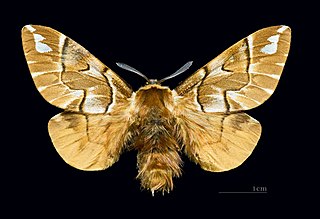
Endromidae is a family of moths. It was long considered to be a monotypic family, containing just one species, the Kentish glory, Endromis versicolora, found throughout the Palaearctic region. The family now consists of several genera and about 30 species, all former members of the family Bombycidae.

Ferdinand Ochsenheimer was a German actor and entomologist (lepidopterist).

Orgyia is a genus of tussock moths of the family Erebidae. The genus was described by Ochsenheimer in 1810. The species are cosmopolitan, except for the Neotropical realm.
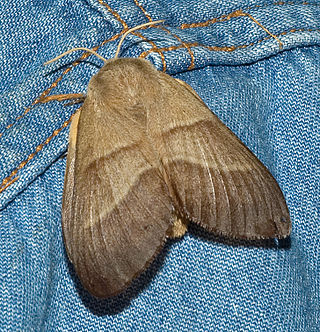
The Lasiocampinae are a subfamily of the moth family Lasiocampidae. The subfamily was described by Thaddeus William Harris in 1841.
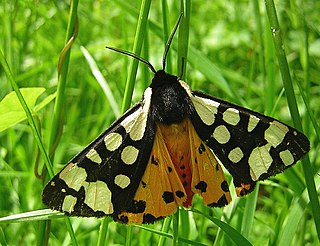
The Arctiina are a subtribe of moths in the family Erebidae.

Hadenini is a tribe of cutworm or dart moths in the family Noctuidae. There are more than 140 genera and 1,000 described species in Hadenini, found worldwide.

The Xylenini are a mid-sized tribe of moths in the Hadeninae subfamily. There is some dispute about this tribe. Some resources have these genera listed under subfamily Cuculliinae instead, or upranked them to a distinct subfamily Xyleninae.
Episema is a genus of moths of the family Noctuidae. The genus was described by Ochsenheimer in 1816.

Simyra is a genus of moths of the family Noctuidae. The genus was described by Ochsenheimer in 1816.
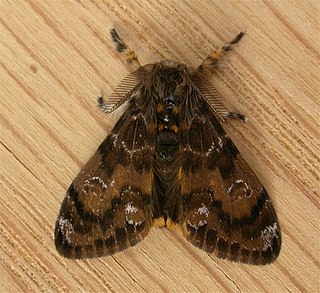
Teia is a genus of tussock moths in the family Erebidae first described by Francis Walker in 1855.

Gastropacha is a genus of moths in the family Lasiocampidae. It was first described by Ochsenheimer in 1810.
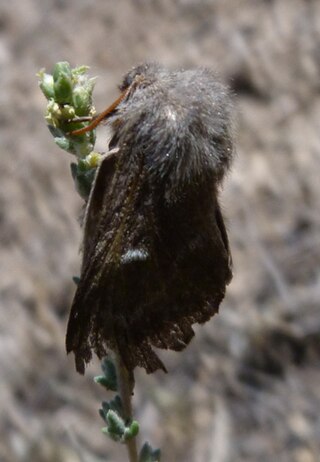
Psilogaster is a monotypic moth genus in the family Lasiocampidae first described by Reichenbach in 1817. Its only species, Psilogaster loti, described by Ferdinand Ochsenheimer in 1810, is found in south-western Europe and North Africa.

Pygaera is a monotypic moth genus of the family Notodontidae erected by Ferdinand Ochsenheimer in 1810. Its only species, Pygaera timon, was first described by Jacob Hübner in 1803. It is found in northern and central Europe, through eastern Asia up to Ussuri and Japan.

Phalera is a genus of moths of the family Notodontidae.

Notodonta is a genus of moths of the family Notodontidae erected by Ferdinand Ochsenheimer in 1810.

Aglia is a genus of moths in the family Saturniidae first described by Ochsenheimer in 1810. It is the only genus in the subfamily Agliinae.
Noctuini is a tribe of owlet moths in the family Noctuidae. There are at least 520 described species in Noctuini.
This page is based on this
Wikipedia article Text is available under the
CC BY-SA 4.0 license; additional terms may apply.
Images, videos and audio are available under their respective licenses.
















